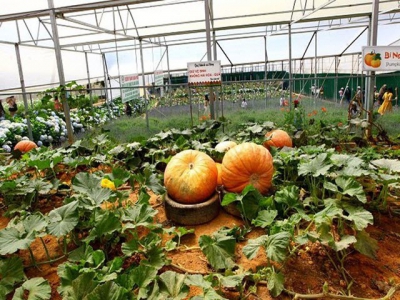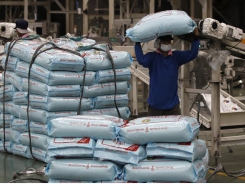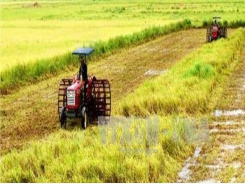Will Vietnam continue to import technology or become a tech creator?

With weak investments and poor technology, Vietnam is finding it difficult to organize hi-tech agriculture value chains.
Agriculture could be the driving force for Vietnam's development
Agriculture affects many export-oriented sectors and could be the driving force for Vietnam’s development in the next decades, analysts say. But it could also hinder economic development and push enterprises to the verge of bankruptcy.
Vietnam’s agriculture, after five years of restructuring without institutional reform, still cannot generate sustainable development.
Vietnam is striving to develop hi-tech agriculture. Some projects with high technology have been developed, including smart water sensor technology in the Mekong Delta, greenhouses and net houses in Lam Dong province, and automatic watering in Da Lat and Dak Lak. But these were not enough to generate a trend.
Imported technology is being used by Vietnam as a way to get higher value from agricultural production.
Some projects with high technology have been developed, including smart water sensor technology in the Mekong Delta, greenhouses and net houses in Lam Dong province, and automatic watering in Da Lat and Dak Lak. But these were not enough to generate a trend.
The survey by the Institute of Agricultural & Electrical Engineering and Post-harvest Technology at 92 machine manufacturing facilities in 15 provinces and cities found that imported agricultural machinery products from Japan, China, Korea, Thailand and Taiwan accounted for nearly 70 percent, while Vietnamese products accounted for only 15-20 percent.
Vietnam’s mechanization capacity is still low. According to Dao The Anh, deputy director of the Institute of Field Crops Research Institute, Vietnam's mechanical capacity index is 2.2 HP per hectare, while the figures are 4 HP and 8 HP for Thailand and China, respectively.
Vietnam continues to aim for mechanical rice harvesting. However, by 2015, the country only had 600,000 tractors of different kinds with the capacity of 5 million HP, and 598,000 harvesters. As a result, mechanical harvesting can be implemented in only 30 percent of the area in Red River Delta and 76 percent in Mekong Delta.
Nguyen Quynh Hoa from the Hanoi Economics University pointed out that investments in science and technology are decreasing.
Vietnam now spends 1 percent of total expenditures on science & technology development. In 2016, the spending was 1.27 percent, lower than the 1.52 percent in 2015 which accounted for 0.5 percent of GDP, below the 1 percent of Malaysia and 3 percent of Singapore.
In 2017, Resolution No 30 mentioned the credit package of VND100 trillion, or $4.5 million reserved for hi-tech agriculture development, especially for international cooperation projects in technology and equipment transfer.
However, businesses did not pour money into the field.
The Ministry of Planning and Investment (MPI) reported that only 49,600 enterprises have invested in agriculture, or 8 percent of total operating enterprises. Ninety percent of the enterprises are private, while the remaining are state-owned and foreign invested.
Even the enterprises with strong machinery brands have found it difficult to maintain domestic market share.
Có thể bạn quan tâm
Phần mềm

Phối trộn thức ăn chăn nuôi

Pha dung dịch thủy canh

Định mức cho tôm ăn

Phối trộn phân bón NPK

Xác định tỷ lệ tôm sống

Chuyển đổi đơn vị phân bón

Xác định công suất sục khí

Chuyển đổi đơn vị tôm

Tính diện tích nhà kính

Tính thể tích ao hồ




 Organic food market struggles for market share
Organic food market struggles for market share  Bạc Liêu to continue expansion of large-scale rice…
Bạc Liêu to continue expansion of large-scale rice…